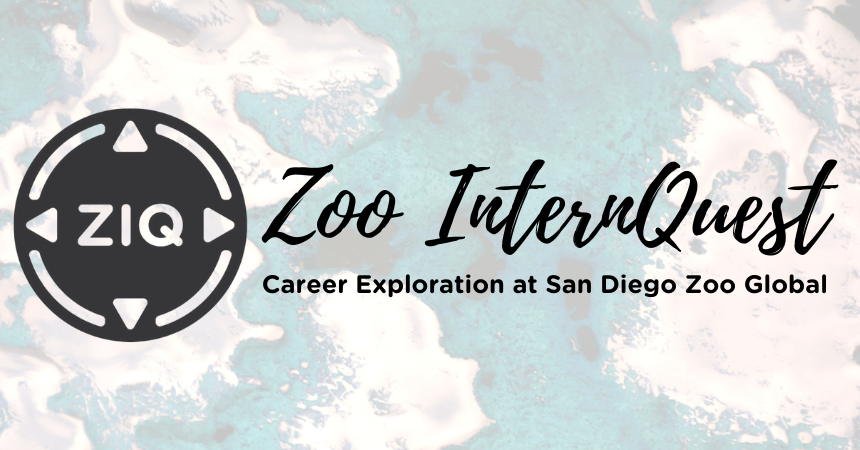Zoo InternQuest is a seven-week career exploration program for San Diego County high school juniors and seniors. Students have the unique opportunity to meet professionals working for the San Diego Zoo Wildlife Alliance, to learn about their jobs, and then blog about their experience online. Follow their adventures here on the Zoo’s website!
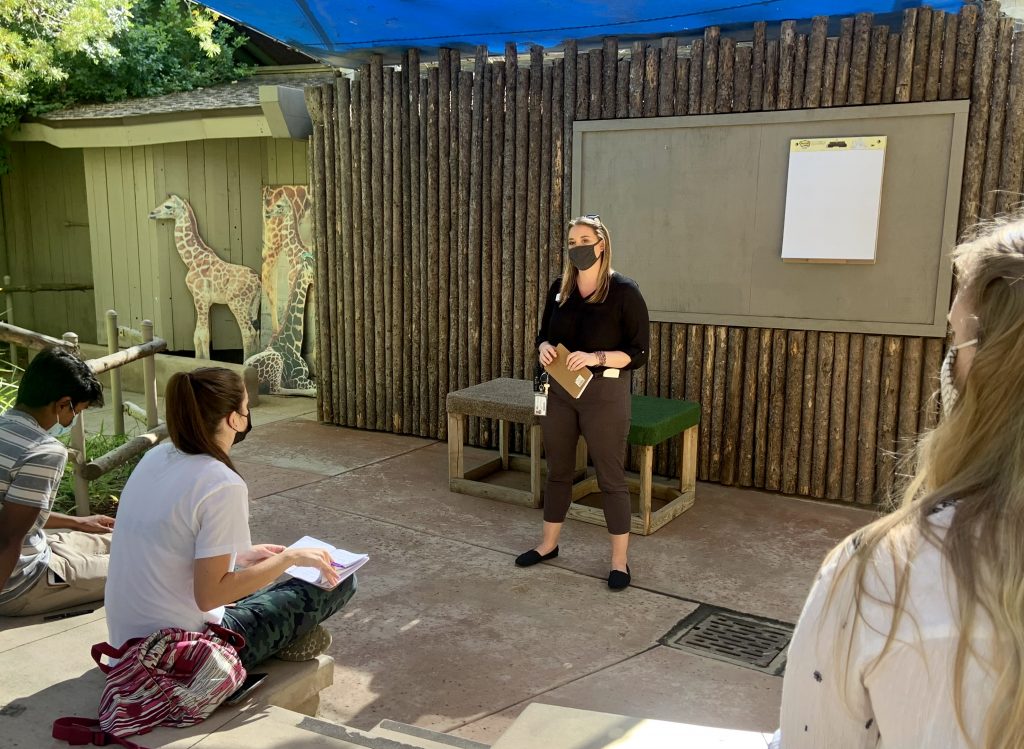
Traveling behind the scenes at the San Diego Zoo Safari Park, the interns had the opportunity to meet Ms. Louisa Radosevich, a Wildlife Welfare Specialist. They learned about the San Diego Zoo Wildlife Alliance’s dedication to the well-being of all the inhabitants of the Park. Ms. Radosevich explained the importance of her role in keeping the residents of the Safari Park happy and healthy through the use of behavioral, medical, and environmental research, along with her collaboration with the Wildlife Care Specialists. Ms. Radosevich gave the interns the opportunity to experience a part of her job by making them brainstorm important factors that would influence welfare plans for wildlife, using flamingos and tigers as an example.

Ms. Louisa Radosevich is a Wildlife Welfare Specialist at the San Diego Zoo Safari Park. On the path to this career, she earned her bachelor’s degree from the University of California, Davis in animal biology. She went to Sonoma State University where she earned her master’s degree in biology. Ms. Radosevich began her research at the California National Primate Center at UC Davis which had a big influence on her career path. She realized she wanted to study wildlife behavior which encouraged her to learn about the other jobs that involve animals and their well-being. She spent some time volunteering prior to receiving her fellowship with the San Diego Zoo Wildlife Alliance. Ms. Radosevich spent time in San Clemente Island and Puerto Rico where she was involved in captive breeding programs, behavioral observations of animals, and data collection. She then earned a position at the Nikita Kahn Rhino Rescue Center where she participated in behavioral research for two years which led her to her current position at the Safari Park.
As a Wildlife Welfare Specialist, Ms. Radosevich occupies a relatively new and exclusive role at the San Diego Zoo Safari Park, holding the post for the last nine months. Her goal at the Park is focused on maximizing animal welfare. What is animal welfare? The AZA (Association of Zoos and Aquariums) defines animal welfare as the collective mental, physical, and emotional well-being of an animal on a continuum from good to poor. Ms. Radosevich coordinates with wildlife specialists, researchers, managers, supervisors, and veterinarians to ensure they can keep the animals’ welfare as high as possible. In order to do so, Ms. Radosevich must do two things: assess the welfare of the animals in question, and act on said assessment to better fit the animal’s needs. “What are the behaviors we want to encourage? What are the resources we need to provide?”

Consider an animal’s environment. A great portion of an animal’s welfare relies on the environment they live in simply due to how they have evolved to fit their natural habitats. For example, Ms. Radosevich had the pleasure and privilege of working with the wildlife specialists caring for Everest, the albino wallaby, who requires a very specialized environment to achieve a high measure of animal welfare. Due to his albinism, Radosevich and the wildlife specialists at the Safari Park have to take precautionary measures to keep him out of the sun due to his heightened sensitivity to ultraviolet rays. When necessary, they often monitor the wildlife for ten minutes, two to three times a week to properly assess the wildlife’s needs. In these ten minutes, Ms. Radosevich watches for behaviors which directly respond to an external stimulus, or cause. Then, she acts accordingly, collaborating with her colleagues to modify the wildlife’s environment to support their welfare. For example, let’s take a look at the flamingos. In order to fully thrive, their native habitat must be considered: shallow waters for wading, algae to satisfy their senses, fellow flamingos for companionship, the list goes on. Without these factors that Radosevich and her team have carefully integrated into their habitat, the flamingos’ welfare would not be as high as they currently are at the Safari Park. Ms. Radosevich strives to continue developing a relationship between the animals she works with and their respective environments as she finds more and more ways to keep their welfare to the highest degree possible.
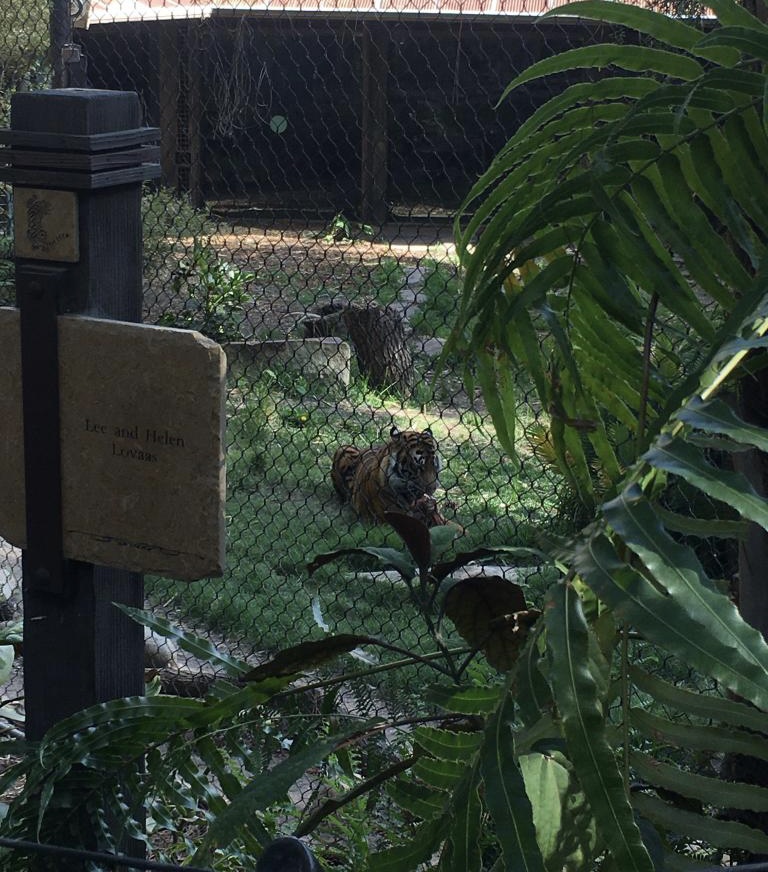
Although Ms. Radosevich doesn’t work with her favorite animal (the moose), she enjoys many aspects of her job. Ms. Radosevich’s favorite is surprisingly not the animals, but the people she meets and works with. She loves teaching, learning, and meeting new wildlife care specialists and guests. Throughout her time at the Safari Park, she has found that working with teams that are open-minded and willing to try new things can be the most rewarding. Her favorite moments are when certain teams implement practices or activities to encourage the wildlife to participate in new and stimulating experiences. She loves that her job connects her with other departments and co-workers such as veterinarians and wildlife care specialists. At the same time, a challenging part of her job is working alone and the large amount of independence that comes with her responsibilities. The interns also met Xela, a Wildlife Care Specialist, who shared some insight on her favorite parts of her job like working with different wildlife species. She loves how unique they are, the special care it takes to maintain their health, and how their presence gives a long-deserved spotlight to their populations. Ms. Radosevich works with teams like Xela’s to help ensure the wildlife at the Safari Park thrive.
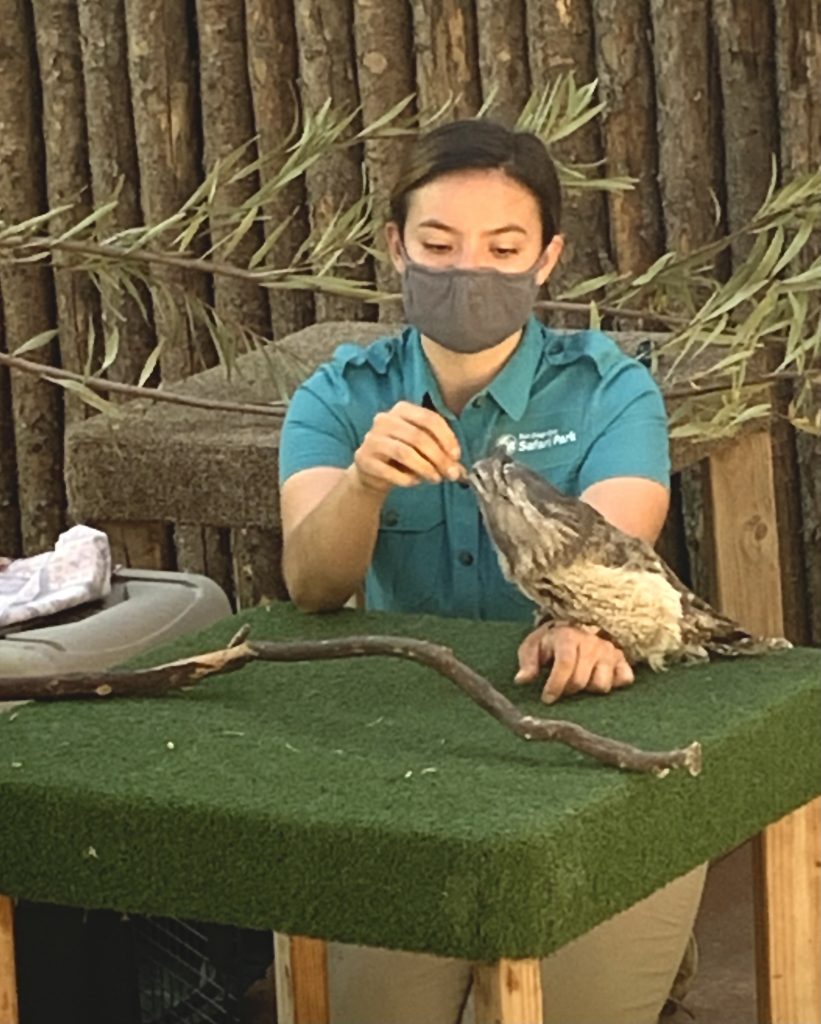
Ms. Radosevich also works with wildlife that may require even more specialized welfare plans, such as Kermit the tawny frogmouth. Often confused for being an owl, the tawny frogmouth is a relative of the nightjar and a bird native to Australia. They inhabit forests, scrubland, eucalyptus and acacia woodlands, and suburban parks. One of their most distinctive features is their frog-like mouth designed for capturing insects and small animals. Considered to be among Australia’s most effective pest-control birds, the color of their plumage resembles tree bark. In addition to being beneficial for hunting, when a tawny frogmouth senses danger, it expands its neck, closes its eyes, and freezes to appear as if it is just a broken branch in a process called stumping. Kermit in particular only has one wing, so he cannot move around as easily as other frogmouths in their natural habitat. With his welfare in mind, Kermit’s habitat has been modified to be more accessible to a bird that cannot fly. His habitat is designed to be accessible by jumping with low sitting perches and smaller gaps in between branches. Due to his unique circumstances, Kermit was chosen to represent his species as a wildlife ambassador at the San Diego Zoo Safari Park.
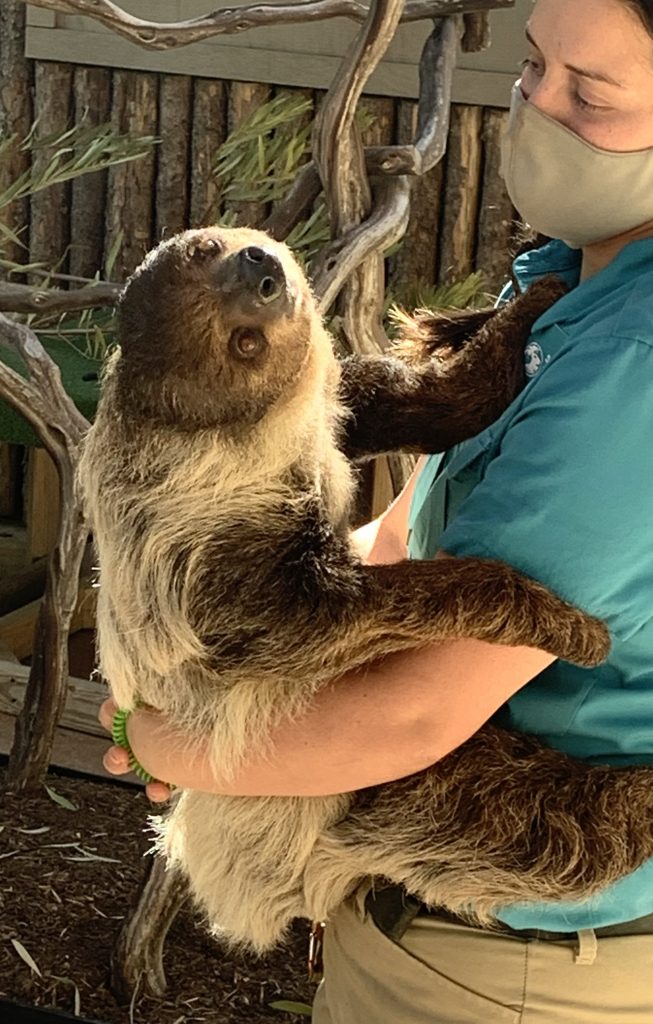
Most–if not all– careers and positions at the San Diego Zoo and Safari Park are related to conservation, but each job has its own way of contributing. Ms. Radosevich explained that her job is no different. Much of the wildlife that live at the Zoo and Safari Park are endangered or threatened in their natural habitat, and are part of programs designed to help replenish the dwindling numbers of their species. Ms. Radosevich greatly benefits these programs because of the job she does developing strategies for animal care and observation. These strategies are used at every stage of vital conservation efforts, such as animal husbandry and captive breeding programs, and benefit every animal involved. She also works closely with the wildlife care specialists in charge of wildlife ambassadors, which are animals that work closely with their care specialists to build connections with guests during presentations. Her job helps make plans to ensure that there are effective, beneficial, and motivating ways to work with each animal. This means that the animals remain healthy, happy, and motivated to work, providing more opportunities for them to inspire guests to get involved in conservation themselves. All in all, Ms. Radosevich’s job is very important to conservation efforts and will continue to benefit many different animals and species to come.
For those interested in Ms. Radosevich’s career, she emphasized the ability to collaborate with colleagues. Because her job requires her to communicate with so many different wildlife care specialists, being open minded and willing to exchange ideas with others are important skills to have. Ms. Radosevich knows that no one understands an animal and their needs better than its designated wildlife care specialist. She listens carefully to understand as much about the animal as she possibly can. She uses this input to create a plan to improve the experiences of the wildlife in the Park’s care. She is always interested in sharing ideas to learn how to better improve an animal’s life. She collaborates with staff not only at the Safari Park, but also with zoos in other countries! She has collaborated with the Columbia Zoo to come up with a welfare plan for their jaguar and Andean bear. While a large part of her job involves cooperating with others, a good deal of it involves tackling problems by herself. Being sure in one’s own abilities to solve challenges is another vital skill for a Welfare Specialist. Since her job position is relatively new, Ms. Radosevich often has to think outside the box in order to come up with the best solution for providing wildlife with the proper care they need.

The passion held by all the employees at the San Diego Zoo and Safari Park for the well-being of the wildlife they care for was clearly apparent. While dedicated to improving living conditions for wildlife across the globe through conservation, the San Diego Zoo Wildlife Alliance does not slack on the home front, providing the best care possible for their Park’s residents. They hope to set a glowing example of wildlife welfare to inspire organizations around the world.
Week Five, Spring Session 2021

